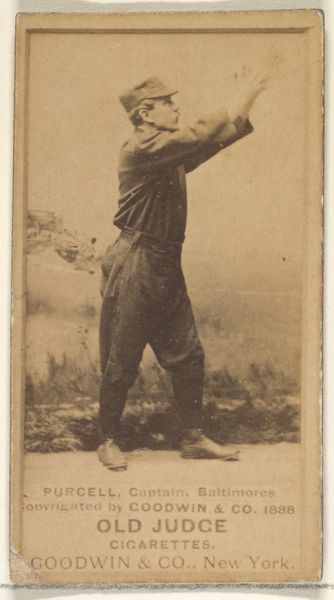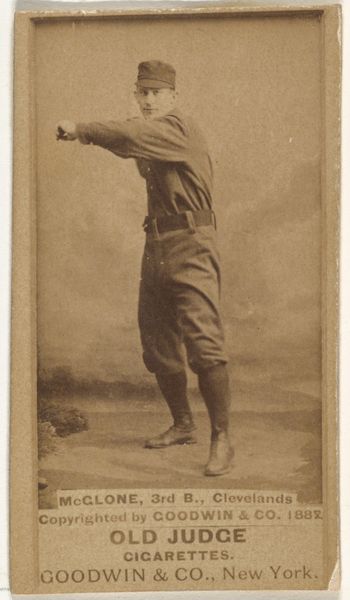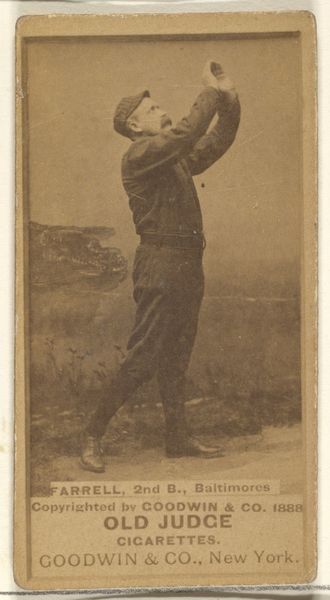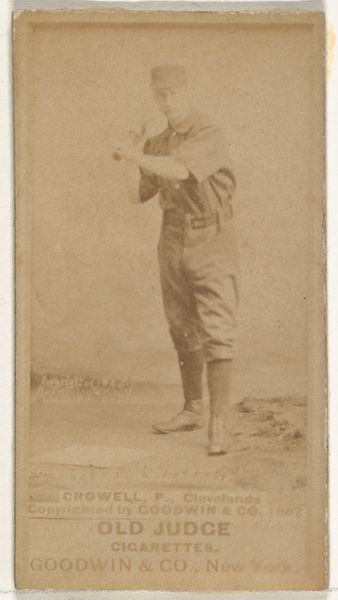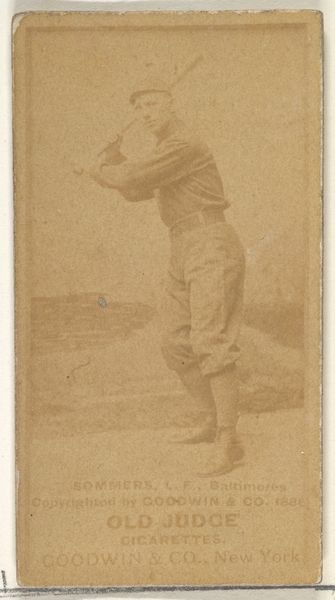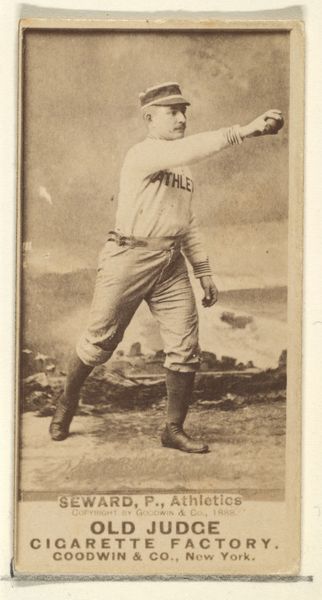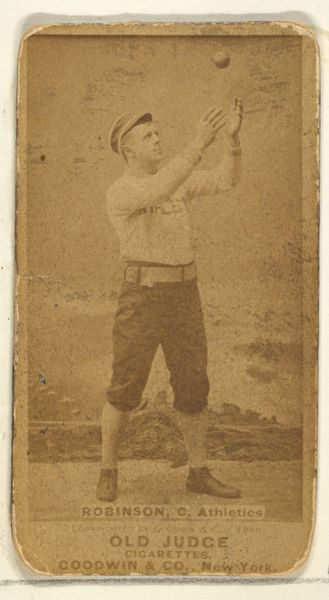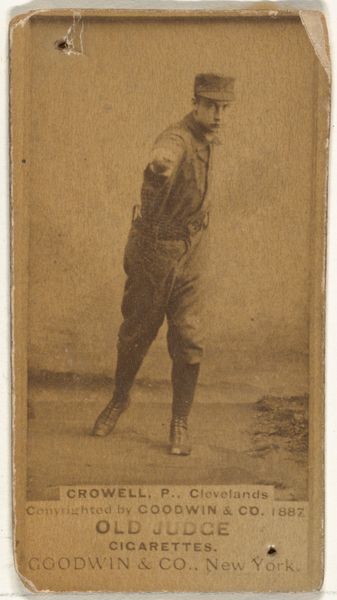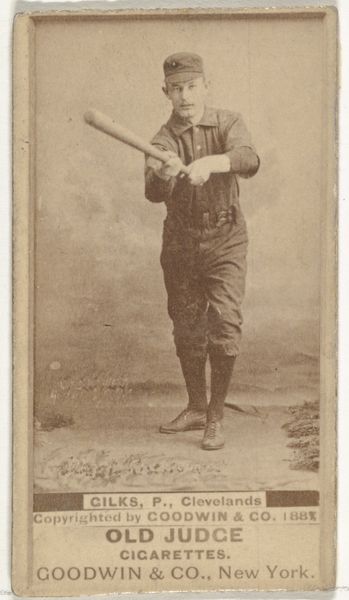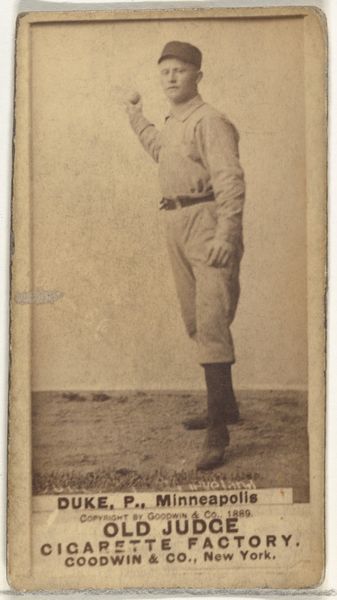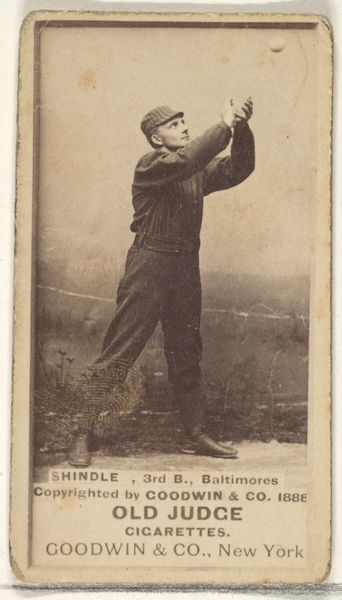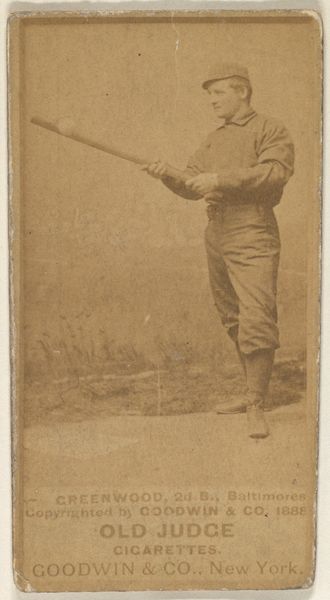
Purcell, 1st Base, Philadelphia Athletics, from the Old Judge series (N172) for Old Judge Cigarettes 1888
0:00
0:00
drawing, print, photography
#
portrait
#
drawing
# print
#
impressionism
#
baseball
#
photography
#
men
#
genre-painting
#
athlete
#
academic-art
Dimensions: sheet: 2 11/16 x 1 3/8 in. (6.9 x 3.5 cm)
Copyright: Public Domain
Curator: Let’s discuss this intriguing piece from 1888. This is a photographic print entitled "Purcell, 1st Base, Philadelphia Athletics" made by Goodwin & Company as part of the Old Judge Cigarettes series. Editor: Immediately, the sepia tones give it such a strong sense of nostalgia. It really anchors the work in its specific time. You can almost smell the tobacco, can't you? And, look, it’s worn, handled, a thing made for exchange. Curator: Exactly! And that commercial context is crucial. It depicts an athlete, placing him within a burgeoning culture of celebrity and commodity. What does the mass production of such an image signify regarding early sports culture? Editor: I’m also struck by the photographic process itself, the albumen print, likely from a glass negative. It gives the image a subtle texture and tonal range that evokes more detail. Think about the labor involved in setting up the shot, processing the image, printing and distributing these cards with packs of cigarettes. Curator: Precisely! It highlights a shift in societal values as baseball gains popularity, reflecting America's changing cultural landscape as leisure became commodified alongside race and class divides. The idealized male form celebrated while marginalized voices remain unheard and unseen. Editor: Absolutely. The pose itself is interesting. Not mid-action, but seemingly caught in a reflective moment. It humanizes Purcell beyond simply being an athlete. There's a story implied in the materials, distribution, and representation that shows a network of makers and distributors. Curator: What implications might the subject of athleticism, specifically baseball, have for the cultural construction of masculinity during that time? How are notions of the body, race, and American identity interwoven into this representation of sports culture? Editor: For me, it opens a dialogue about the changing relationship between labor and leisure and between photographic portraiture and popular culture. These cards really changed the meaning of celebrity itself. I hadn't considered that sports culture was intertwined in advertising and commodification at its beginnings, though. Curator: Yes! And understanding these contexts challenges us to look at not only this one particular photograph, but its dissemination. Thinking about how such imagery contributes to constructing ideas about identity, race, gender and sports—it asks us to reassess whose stories get told and preserved in history.
Comments
No comments
Be the first to comment and join the conversation on the ultimate creative platform.
